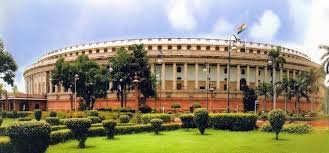New Delhi- The vice presidential elections in India have rarely been smooth walkovers. Out of 16 elections held since 1952, only four have gone uncontested, while the rest witnessed direct or multi-cornered contests reflecting the evolving political landscape of the country.
The first two vice presidential elections were won unopposed by Dr. Sarvapalli Radhakrishnan in 1952 and 1957. Although a candidate from Andhra Pradesh filed his nomination in the inaugural election, his papers were rejected, paving the way for Radhakrishnan’s uncontested ascent to office.
Another uncontested election came in 1979, when legal luminary and former Chief Justice of India Mohammad Hidayatullah was elected vice president without opposition. Hidayatullah holds the rare distinction of having served as Chief Justice, Vice President, and even Acting President of India. He stepped in as Acting President in 1969 when V V Giri resigned to contest the presidential election following Zakir Hussain’s sudden death.
In 1987, Shankar Dayal Sharma became the fourth and last person to win the vice presidency unopposed. Despite 27 individuals filing nominations, only Sharma’s papers were found valid.
Beyond these exceptions, most elections for the vice president’s post have seen spirited contests. In 1992, K R Narayanan received 700 out of 701 valid votes, with his rival Kaka Joginder Singh, famously known as Dharti Pakad, securing just one.
The only triangular contest in vice presidential election history took place in 2007. UPA’s M Hamid Ansari won that race against NDA’s Najma Heptullah and Third Front candidate Rasheed Masood. Ansari garnered 455 out of 752 valid votes and went on to win a second term in 2012 by defeating BJP’s Jaswant Singh.
Several other contests have stood out for their competitive nature. In 1962, Zakir Hussain beat N C Samantsinhar by a margin of 554 votes. V V Giri, in 1967, won against Prof Habib with 483 of the 676 valid votes. The 1969 election saw G S Pathak winning against five contenders after Giri stepped down to contest the presidential election.
B D Jatti’s 1974 win against N E Horo, R Venkataraman’s 1984 victory over Bapu Chandrasen Kamble, and Krishna Kant’s 1997 defeat of Surjit Singh all marked significant political phases of the time.
In the 2002 contest, BJP’s Bhairon Singh Shekhawat defeated Congress candidate Sushilkumar Shinde by polling 454 votes. The 2017 election saw Venkaiah Naidu of the BJP win comfortably over Gopalkrishna Gandhi of the Congress-led UPA, and in 2022, NDA nominee Jagdeep Dhankhar defeated Margaret Alva to become the current Vice President.
With only a handful of candidates managing to secure the post without facing a vote, the history of India’s vice presidential elections highlights both moments of consensus and the more frequent contests that mirror the nation’s vibrant and often complex political theatre.






